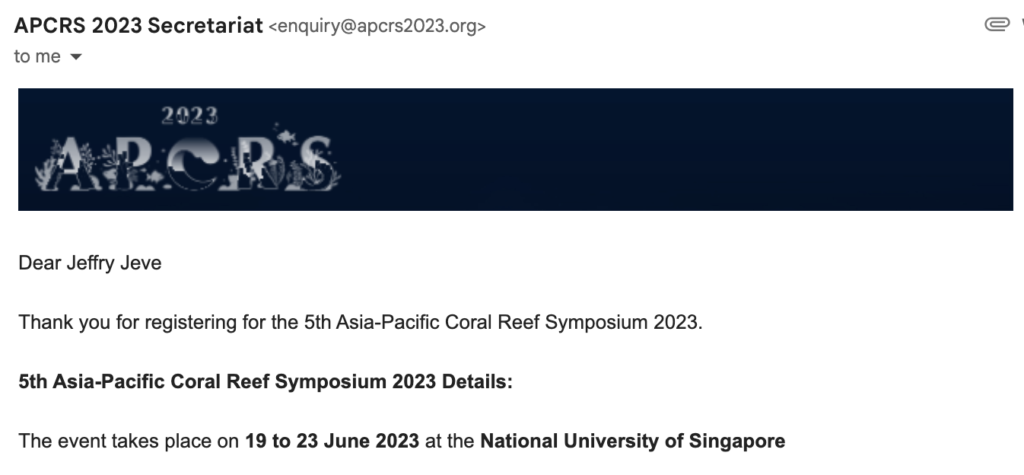by Jeffry Jeve | Biological Oceanography
Introduction
Most studies on scleractinian corals are mainly focused on shallow coral reefs (0-30 meters) due to their heightened vulnerability to climate change (Bak et al., 2005). However, with increasing levels of anthropogenic disturbances, deep-water ecosystems are also facing threats (Pinheiro et al., 2019, 2023; Rocha et al., 2018). Though more understudied than shallow-water reefs, there has been a growing trend in studies on benthic coral ecosystems in deeper waters, particularly mesophotic reefs (30-150 meters) (Pyle & Copus, 2019; Turner et al., 2017) and cold-water reef ecosystems (>200 meters) (J. M. Roberts & Cairns, 2014). This has prompted questions about how climate change will impact scleractinian corals at deeper depth ecosystems and whether they will respond differently from shallow reef inhabitants.
This study sought to: (1) compare and contrast the characteristic composition of scleractinian coral in shallow-water (0-30m), mesophotic (30-200m including rariphotic zone), and cold-water coral reef ecosystems (>200m), and (2) determine the effects of ocean acidification and ocean warming across different depth-associated coral reef ecosystems and evaluate the responses of their scleractinian coral inhabitants.
Findings
Coral reef ecosystems are dynamic and complex but are threatened by the impacts of climate change and often exacerbated by anthropogenic disturbances (Figure 1). Scleractinian corals are among the major groups affected by these effects leading to major bleaching events from highly susceptible shallow reefs (Baird et al., 2021) to the mesophotic coral reef ecosystem (~90m) (Andradi-Brown et al., 2016). While shallow reef ecosystems receive the direct impacts of climate change from stronger and more frequent tropical storms (IPCC, 2013), mesophotic reefs may also experience direct effects like being covered by sediments, or indirectly when waters become turbid affecting light attenuation and hindering zooxanthellate corals to photosynthesize (Pinheiro et al., 2019; Rocha et al., 2018; Andradi-Brown et al., 2016). Conversely, the cold-water reefs have a very stable condition compared to the two (Levin & Bris, 2015).
The differences in the scleractinian coral characteristics across different depth-associated ecosystems, as shown in Table 1, may cause varying responses to climate change. These differences are driven by light availability, temperature (naturally decreases with depth), and pressure (increases with depth). Scleractinian corals may have developed adaptations to survive in deeper waters like changing to flattened morphology to efficiently capture light for mesophotic zooxanthellate corals (Baker et al., 2016) and tree-like branching structure to efficiently capture prey in azooxanthellate cold-water corals (Freiwald et al., 2004). However, these adaptations may lead to certain trade-offs like low reproductive output (Shlesinger et al., 2018) and slow growth rate (Freiwald et al., 2004).
Impacts of climate change have been experienced by upper depths (mesophotic to shallow). On the other hand, cold-water scleractinian corals can live for thousands of years in a stable environment but may not be tolerant to change and have low adaptation ability (Levin & Bris, 2015). Thus, the impacts of ocean acidification and ocean warming like food depletion and deoxygenation may be major environmental drivers determining the life and death of cold- water corals in future ocean scenarios (da Costa Portilho-Ramos et al., 2022).
Recommendations
Given the findings of the study, more assessments and monitoring (if possible) are needed especially in MCEs and cold-water coral reef ecosystems to explain possible patterns (species composition and underlying physico-chemical influences) to better understand their scleractinian inhabitants. Moreover, further investigation of MCEs is needed, and exploration of possible cold-water reef ecosystems, especially in the tropical region where the coral triangle and center of marine biodiversity is situated.
Summary and Conclusion
Thedeep water ecosystems (MCEs and cold-water) are not exempted from the impacts or threats of climate change, especially with the uncontrollable inputs of anthropogenic stressors. However, scleractinian corals across different depth-associated ecosystems may exhibit distinct responses to climate change due to differences in their characteristics and depth -associated conditions.
Appendices

Figure 1. The impacts of climate change (ocean acidification and ocean warming) are exacerbated by anthropogenic disturbances across different depth-associated reef ecosystems. Environmental stressors are denoted by bold letters. This illustration is modified from Baker et al. (2016)
Table 1. Characteristics of scleractinian corals across depth-associated coral reef ecosystems. Data from Roberts et al. (2019); Baker et al. (2016); Frank et al (2011); Veron et al. (2009); Cairns (2007); Roberts & Cairns (2014); Dawson (2002).

References
Baird, A. H., Yakovleva, I. M., Harii, S., Sinniger, F., & Hidaka, M. (2021). Environmental constraints on the mode of symbiont transmission in corals. Journalof Experimental Marine Biology and Ecology, 538.https://doi.org/10.1016/j.jembe.2020.151499
Bak, R. P. M., Nieuwland, G., & Meesters, E. H. (2005). Coral reef crisis in deep andshallow reefs: 30 years of constancy and change in reefs of Curacao and Bonaire. Coral Reefs, 24(3), 475–479. https://doi.org/10.1007/s00338-005-0009-1
Baker, E. K., Puglise, K. A. ., Harris, P. T. (Peter T., United Nations Environment Programme., & GRID–Arendal. (2016). Mesophotic coral ecosystems : a lifeboat for coral reefs?
Cairns, S. D. (2007). Deep-water corals: An overview with special reference to diversity and distribution of deep-water Scleractinian corals. https://www.researchgate.net/publication/233527507
da Costa Portilho-Ramos, R., Titschack, J., Wienberg, C., Rojas, M. G. S., Yokoyama, Y., & Hebbeln, D. (2022). Major environmental drivers determining life and death of cold-water corals through time. PLoS Biology, 20(5). https://doi.org/10.1371/journal.pbio.3001628
Dawson, J. P. (2002). Biogeography of azooxanthellate corals in the Caribbean and surrounding areas. Coral Reefs, 21(1), 27–40. https://doi.org/10.1007/s00338-001-0207-4
Frank, N., Freiwald, A., López Correa, M., Wienberg, C., Eisele, M., Hebbeln, D., Van Rooij, D., Henriet, J. P., Colin, C., van Weering, T., de Haas, H., Buhl-Mortensen, P., Roberts, J. M., De Mol, B., Douville, E., Blamart, D., & Hatté, C. (2011). Northeastern Atlantic cold-water coral reefs and climate. Geology, 39(8), 743–746. https://doi.org/10.1130/G31825.1
Freiwald, A., Grehan, A. J., Koslow, T., & Roberts, J. M. (2004). Cold-water Coral Reefs: Out of Sight-No Longer out of Mind. https://www.researchgate.net/publication/230710662
Levin, L. A., & Bris, N. L. (2015). The deep ocean under climate change. In Science (Vol. 350, Issue 6262, pp. 766–768). American Association for the Advancement of Science. https://doi.org/10.1126/science.aad0126
Pinheiro, H. T., Eyal, G., Shepherd, B., & Rocha, L. A. (2019). Ecological insights from environmental disturbances in mesophotic coral ecosystems. Ecosphere, 10(4). https://doi.org/10.1002/ecs2.2666
Pinheiro, H. T., MacDonald, C., Santos, R. G., Ali, R., Bobat, A., Cresswell, B. J., Francini-Filho, R., Freitas, R., Galbraith, G. F., Musembi, P., Phelps, T. A., Quimbayo, J. P., Quiros, T. E. A. L., Shepherd, B., Stefanoudis, P. V., Talma, S., Teixeira, J. B., Woodall, L. C., & Rocha, L. A. (2023). Plastic pollution on the world’s coral reefs. Nature, 619(7969), 311–316. https://doi.org/10.1038/s41586-023-06113-5
Pyle, R. L., & Copus, J. M. (2019). Mesophotic Coral Ecosystems: Introduction and Overview (pp. 3–27). https://doi.org/10.1007/978-3-319-92735-0_1
Roberts, E. T., Bridge, T. C. L., Caley, M. J., Madin, J. S., & Baird, A. H. (2019). Resolving the depth zonation paradox in reef-building corals. Ecology, 100(8). https://doi.org/10.1002/ecy.2761
Roberts, J. M., & Cairns, S. D. (2014). Cold-water corals in a changing ocean. In Current Opinion in Environmental Sustainability (Vol. 7, pp. 118–126). https://doi.org/10.1016/j.cosust.2014.01.0044
Rocha, L. A., Pinheiro, H. T., Shepherd, B., Papastamatiou, Y. P., Luiz, O. J., Pyle, R. L., & Bongaerts, P. (2018). Mesophotic coral ecosystems are threatened and ecologically distinct from shallow water reefs. https://www.science.org
Shlesinger, T., Grinblat, M., Rapuano, H., Amit, T., & Loya, Y. (2018). Can mesophotic reefs replenish shallow reefs? Reduced coral reproductive performance casts a doubt. Ecology, 99(2), 421–437. https://doi.org/10.1002/ecy.2098
Turner, J. A., Babcock, R. C., Hovey, R., & Kendrick, G. A. (2017). Deep thinking: A systematic review of mesophotic coral ecosystems. In ICES Journal of Marine Science (Vol. 74, Issue 9, pp. 2309–2320). Oxford University Press. https://doi.org/10.1093/icesjms/fsx085
Veron, J. E. N., Devantier, L., Turak, E., Green, A., Kininmonth, S., Stafford-Smith, M., & Peterson, N. (2009). Veron et al. 2009. Delineating the Coral Triangle. Galaxea, Journal of Coral Reef Studies, 91–100.




